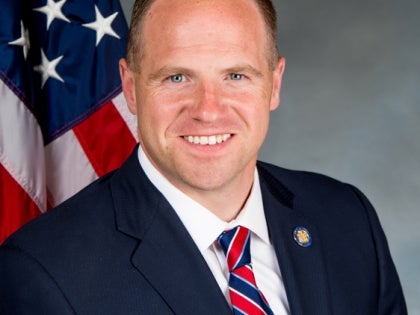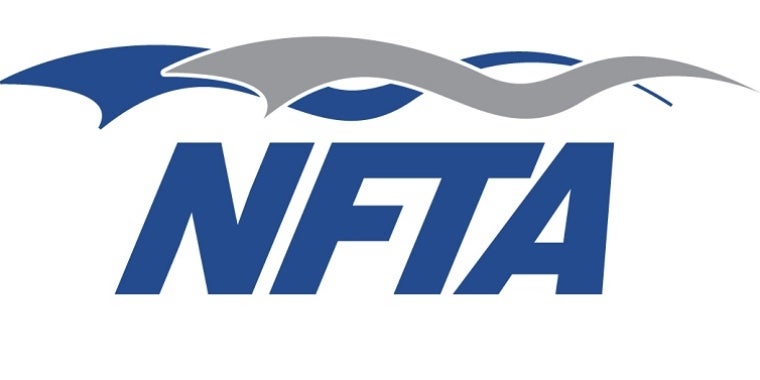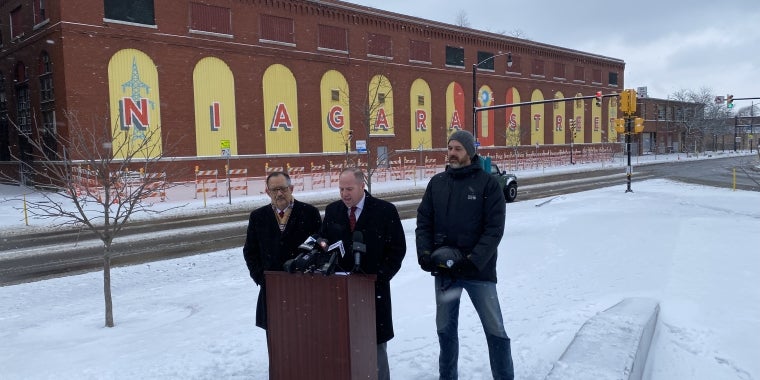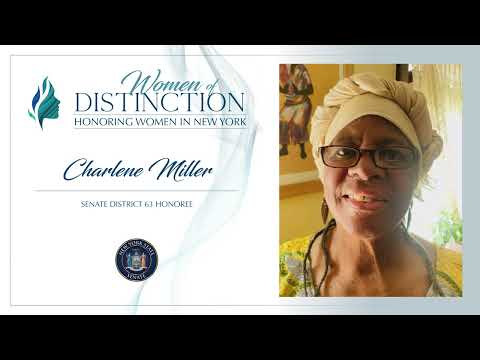
Give Upstate Our Fair Share: With Budget Deadline Looming, Kennedy and Ryan Question Lack of Sufficient State Funding for NFTA Capital Projects, Call for True Upstate/Downstate Transportation Parity
March 3, 2016

NY Legislators Stand With Upstate Transportation Advocates to Call for Fully-Funded Statewide Transit Capital Plan, Equal Funding for Upstate Systems
As State’s Transit Systems See Unprecedented Growth in Ridership & Productivity, Addressing Transit Capital Needs Should Be a Top Budget Priority
BUFFALO, N.Y. – As budget negotiations begin in Albany, New York State Senator Tim Kennedy (D-Buffalo) and Assemblyman Sean Ryan (D-Buffalo) joined local transit advocates today to call for true transportation parity between upstate and downstate and a fully funded capital budget for the Niagara Frontier Transportation Authority (NFTA). As New York City’s MTA continues to see billions allocated towards its improvement plan, the NFTA and its capital projects remain severely underfunded.
Kennedy and Ryan noted concerns over parity between upstate and downstate transportation funding. From 1993-2009, there was equal funding between the upstate DOT capital program and the downstate MTA capital plan. Since 2010, there has been a marked disparity between the two funding levels, with upstate receiving significantly less funding than what is provided for the MTA capital plan for downstate. While the intention to provide parity has been stated in this year’s Executive Budget proposal, the current proposal allocates $22.1 billion for upstate while MTA’s capital plan is funded at $26.1 billion.
“While New York State has made an enormous investment in the rebirth of Buffalo’s downtown, we continue to neglect the critical piece that ties all of its success together: our transportation system,” said Senator Tim Kennedy. “ With upstate’s only light rail system rooted right here in Western New York, the NFTA needs a commitment to additional capital funding over the next five years to not only preserve and maintain it, but to get plans back on track to expand it. We need to work cohesively when it comes to ensuring the future of our region, which frankly, in years past has been abandoned. Additional capital and operating funding would ensure that upstate transit authorities can operate efficiently and effectively and meet the growing demand for more and better service.”
Assemblyman Sean Ryan said, “Ensuring parity between upstate transit agencies and the MTA is a very important goal for this year’s state budget. We made great progress with last year’s budget, bringing an additional $25 million to upstate transit agencies, one of the largest increases in recent memory. While this was a big step forward, more must be done to boost upstate transit agencies, and ensure the NFTA has proper funding to implement a capital program. The New Buffalo will depend heavily on a vibrant public transit network. If we make critical investments today, the Buffalo-Niagara region will be poised for future success.”
The upgrades and expenses the NFTA faces over the next five years are expansive, including but not limited to $31.9 million for track, trackbed and switches on the Main Street Transit Mall, $13.9 million to complete the escalator rebuild, $11.2 million to complete the rebuild of Metro Rail cars, and $7.7 million for Metro Rail Tunnel truck fastener and pad replacement. With the state harboring more than 240,000 lane miles of roads, 17,400 bridges, and 137 public use airports, New York’s transportation systems are vital to ensuring the successes of our economy.
“A high quality, cost-effective bus and rail system is vital to creating jobs, attracting new businesses, and leveraging public and private investment happening across the growing Buffalo Niagara Medical Campus and the city as a whole. As we seek to provide a more sustainable and integrated approach to transportation and an overall healthier environment, we support an increase in funding for the NFTA to provide quality service to the Medical Campus and increased access to opportunities for all,” said Matthew K. Enstice, President & CEO of the Buffalo Niagara Medical Campus, Inc. (BNMC).
"Many residents of Buffalo and Erie County rely on public transportation to get to work, doctors appointments and even school. Insufficient transportation resources for the current system causes buses to run infrequently and unreliably. This discourages residents from using public transportation and therefore, they forgo getting the care or education they need to thrive," said Michael Weiner, President and CEO of United Way of Buffalo & Erie County. "Without a public transportation system that functions for all parts of our city, we will continue to see devastating disparities in access to healthcare, employment, and educational opportunities for our most vulnerable community members."
"More adequate and fair transit funding is a big priority for our 207 partner organizations," said Sam Magavern, co-director of the Partnership for the Public Good. "It is perhaps the most efficient and productive investment the state could make in our region: it fights poverty, reduces pollution, and spurs job creation all at the same time."
"As the City of Buffalo continues to adopt and implement strategies that create a more livable, accessible, walkable and bikeable city - there is a significant opportunity to improve the health, environment and economic vitality for us all," said Justin Booth, Executive Director of GObike Buffalo. "Providing equity in our public transportation system so that everyone has safe and convenient access to their place of employment, school or other destinations supports our city's rebirth, establishing a much stronger backbone of cultural, historical, natural, economic and community assets that can further propel our city along its path of revitalization."
###
Share this Article or Press Release
Newsroom
Go to NewsroomSenator Kennedy 2023 Veteran Hall of Fame
November 10, 2023



Senator Kennedy 2022 Woman of Distinction
August 26, 2022
